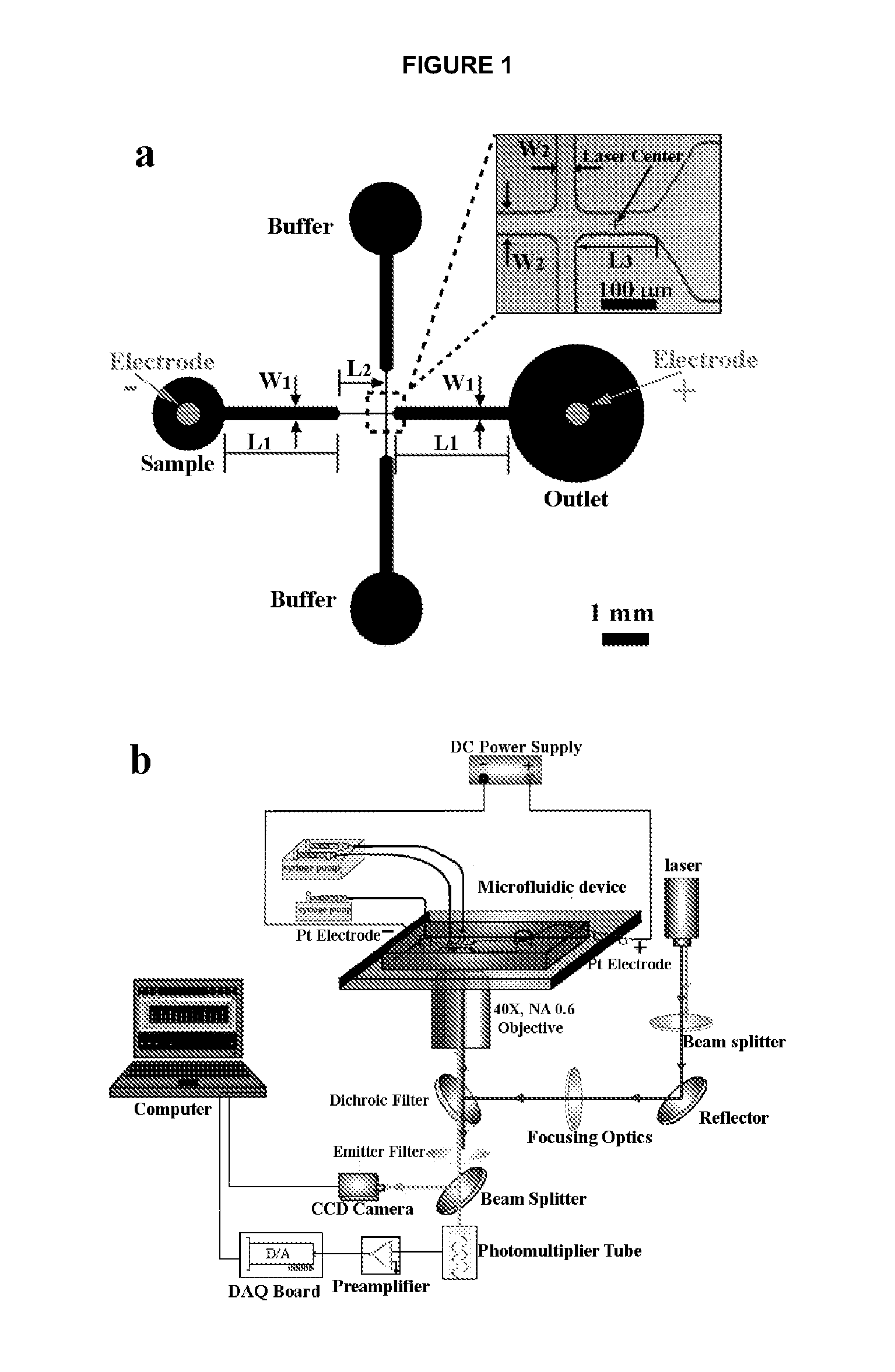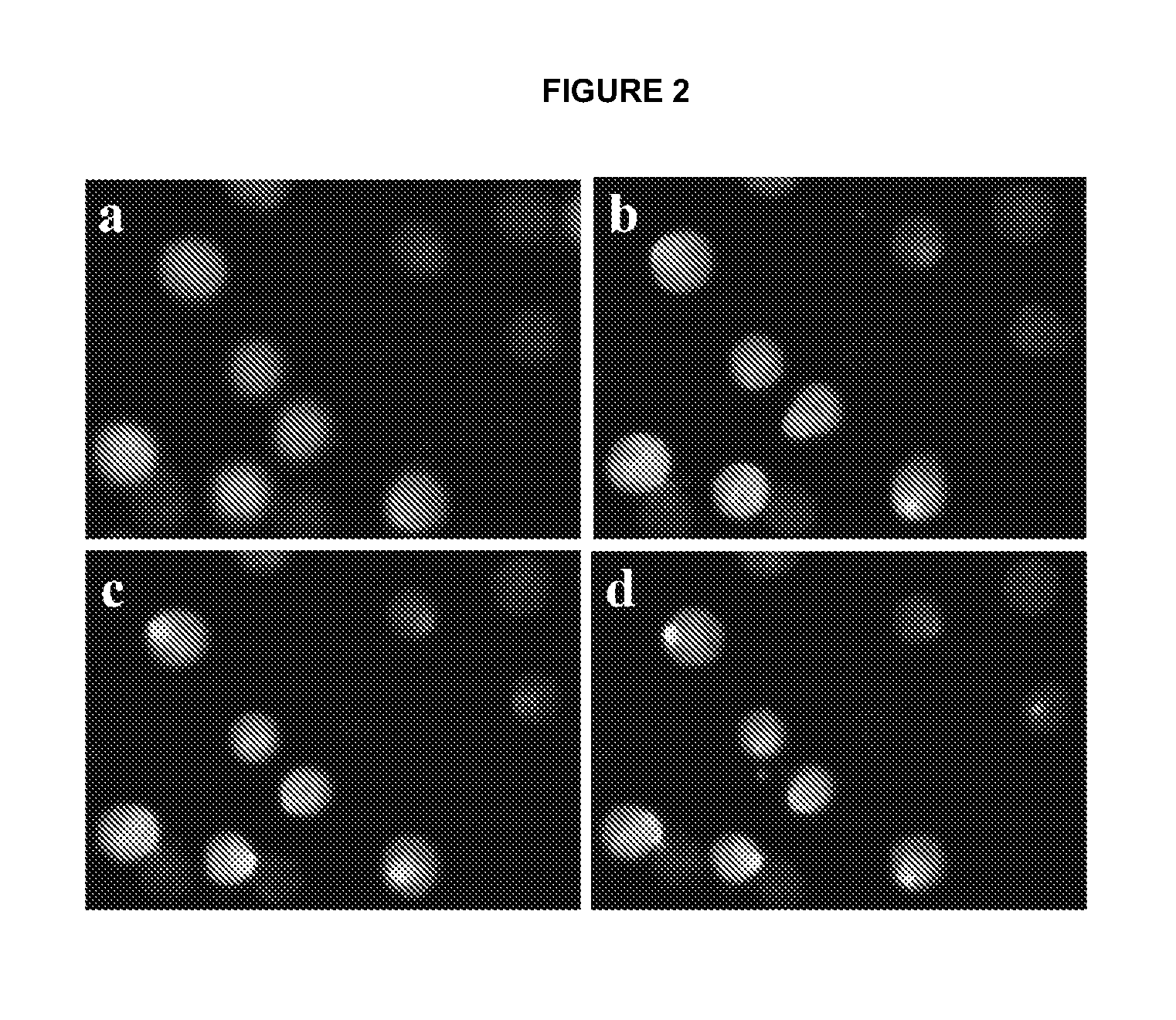Electroporative flow cytometry
a flow cytometry and electroporation technology, applied in the field of electroporation, flow cytometry, flow cytometry, protein translocation, cell biomechanics, can solve the problems of complex image analysis algorithm, intrinsic insensitivity of conventional flow cytometry, and low throughput. , to achieve the effect of reducing the number of cells/second, and improving the accuracy of flow cytometry
- Summary
- Abstract
- Description
- Claims
- Application Information
AI Technical Summary
Benefits of technology
Problems solved by technology
Method used
Image
Examples
example 1
Electroporative Flow Cytometry for Detection of Protein Translocation
[0057]Microchip fabrication. Microfluidic EFC devices were fabricated based on PDMS using standard soft lithography method described before (Duffy et al., 1998, Anal. Chem. 70: 4974-4984; Wang and Lu, 2006, Anal. Chem. 78: 5158-5164). The microscale patterns were first created using computer-aided design software (FreeHand MX, Macromedia, San Francisco, Calif.) and then printed out on high-resolution (5080 dpi) transparencies. The transparencies were used as photomasks in photolithography on a negative photoresist (SU-8 2010, MicroChem. Corp., Newton, Mass.). The thickness of the photoresist and hence the depth of the channels was around 33 μm (measured by a Sloan Dektak3 ST profilometer). The pattern of channels in the photomask was replicated in SU-8 after exposure and development. The microfluidic channels were molded by casting a layer (approximately 5 mm) of PDMS prepolymer mixture (General Electric Silicones ...
example 2
Microfluidic Electroporative Flow Cytometry for Studying Single Cell Biomechanics
[0092]Cell culture. MCF-7 and MCF-10A cell lines were obtained from American Type Culture Collection (ATCC, Manassas, Va.) and cultured according to recommended protocols. Briefly, MCF-10A cell line was cultured in DMEM F-12 supplemented with Horse Serum (5.6%), EGF (20 ng / ml), Insulin (10 μg / ml), antibiotics (1%) and Hydrocortisone (0.5 μg / ml). The MCF-7 cell line was cultured in DMEM supplemented with FBS (10%), Penicillin / streptomycin (1%) and L-glutamine (2 mM). The TPA treated MCF-7 cell line was generated by treating MCF-7 cells with 100 nM 12-O-tetradecanoylphorbol-13-acetate (TPA) for 18 hr before experiments. In order to detach cells from culture flasks, cells were treated with 0.1% Trypsin / EDTA, washed and resuspended using the electroporation buffer (10 mM Na2HPO4, mM NaH2PO4, and 250 mM sucrose). For the treatment of MCF-7 cells with colchicine, MCF-7 cells were incubated in the culture medi...
PUM
| Property | Measurement | Unit |
|---|---|---|
| time | aaaaa | aaaaa |
| width W2 | aaaaa | aaaaa |
| width W2 | aaaaa | aaaaa |
Abstract
Description
Claims
Application Information
 Login to View More
Login to View More - R&D
- Intellectual Property
- Life Sciences
- Materials
- Tech Scout
- Unparalleled Data Quality
- Higher Quality Content
- 60% Fewer Hallucinations
Browse by: Latest US Patents, China's latest patents, Technical Efficacy Thesaurus, Application Domain, Technology Topic, Popular Technical Reports.
© 2025 PatSnap. All rights reserved.Legal|Privacy policy|Modern Slavery Act Transparency Statement|Sitemap|About US| Contact US: help@patsnap.com



